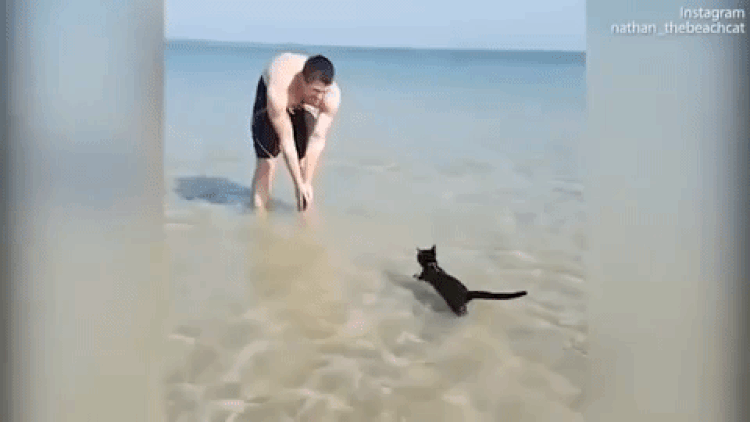Can Cats Swim or Do They All Hate Water?
OK, smartie-pants. You think all cats hate water? It’s actually not true. Some of them don’t mind being in water — and a few cats even love swimming.
Here’s what you should know:
- Not all cats hate water.
- Some breeds are known to enjoy swimming.
- A few cats love splashing around in water.
Below, we’ll take a quick look at some of these swimming cats.
Why do some cats hate water? Find out more here.
10 Cat Breeds That Like Swimming
Here are some of the domestic cats who have a strong liking for water and swimming:
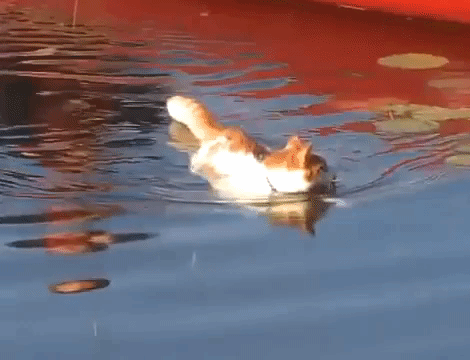
Turkish Van
The Turkish Van, also known as “the swimming cat,” is famous for its unique affinity for water. This elegant breed, with its red facial markings and bushy red tail, has an interesting history:
- According to legend, the Turkish Van jumped off Noah’s Ark and swam ashore, eager to explore.
- Official accounts of Turkish Vans swimming go back to 1955, when tourists witnessed these cats enjoying the waters of Lake Van in Turkey.
- In Legacy of the Cat, Gloria Stephens describes how these cats were observed not only swimming but also seeming to genuinely enjoy it. Read more about Legacy of the Cat.
Turkish Vans are rare in their love for water, with the ASPCA noting that these cats “will swim or just lie in the water”—a trait unusual for most felines. Learn more from the ASPCA and the Turkish Van breed profile.
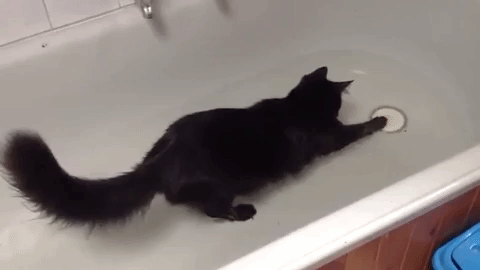
Turkish Angora
Much like their Turkish Van cousins, Turkish Angoras are an ancient cat breed known for their beauty and love of water.
- The Cat Fanciers’ Association describes Turkish Angoras as “rare and beautiful,” as well as “one of the most outgoing and affectionate of all cat breeds.” Learn more about the Turkish Angora here.
- According to pet behavior consultant Arden Moore, Turkish Angoras enjoy splashing around in water, both indoors and outdoors. They will often:
- Splash water out of sinks or hop into the shower with you.
- Run towards the sound of water.
- Paddle in ponds or shallow streams when outdoors.
Moore emphasizes that Turkish Angoras are among the cat breeds that genuinely enjoy playing in water. Read more from Arden Moore.
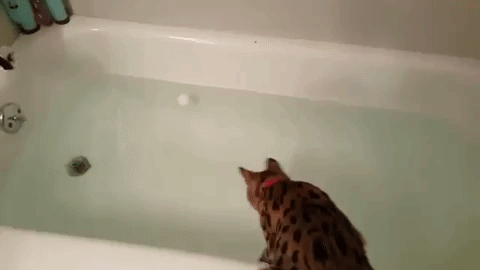
Savannah
The Savannah is a designer cat breed, created from a mix between an exotic African Serval and a domestic cat.
- Savannahs are known for their playful and adventurous nature, especially when it comes to water.
- One Savannah owner shares that her cat Loki enjoys splashing in bathtubs, sinks, and water bowls. Loki even plays in kiddie pools outside.
- Olga Khazanovska, a Savannah breeder, confirms that many Savannahs prefer water activities over traditional toys. They love to splash around and have fun with water.
The Savannah’s wild ancestor, the African Serval, contributes to their love for water. Learn more about the African Serval here.

Bengal
The Bengal is a unique hybrid, created by crossing a domestic cat with the Asian leopard cat, a small wild feline.
- Jean Mill, the creator of the modern Bengal cat breed, noted that Bengals have a strong affinity for water. In her Guide to Owning a Bengal Cat, she mentions that Bengals, when allowed outside, will often play in sprinklers or with a running hose. Learn more about Jean Mill here.
- Vetstreet’s Arden Moore agrees with this, explaining that Bengals dislike being left out of fun activities. They may paw open bathroom doors or yowl until they’re let in to join water-based fun.
Bengals are an active and playful breed, often seeking out water to splash around in. Explore more about Bengal cats in Guide to Owning a Bengal Cat.
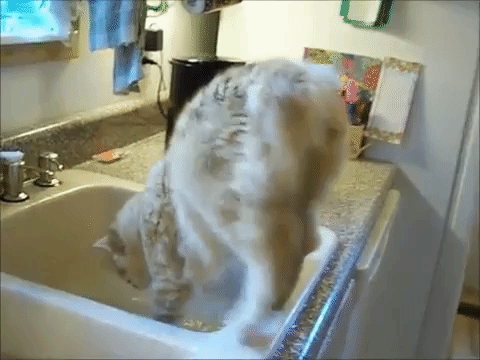
American Bobtail
American Bobtails are native to North America and bear a striking resemblance to wild cats, thanks to their almond-shaped eyes.
- According to The International Cat Association, American Bobtails are “well-muscled, solid cats with the power and grace of an athlete.” Learn more about the breed from TICA.
- Their short, stubby tails wag according to their mood, and their intelligence makes them highly trainable.
- American Bobtails can learn to walk on a leash, play fetch, hide-and-seek, and even perform other tricks.
- Their playful and friendly nature often leads people to compare them to dogs, as they tend to come when called or follow their owners around.
Read more about American Bobtails here.
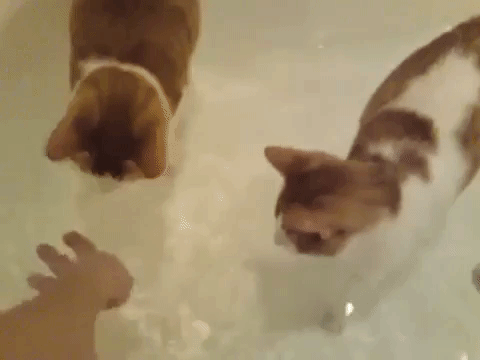
Japanese Bobtail
The Japanese Bobtail is known for its energetic and playful personality. According to The Cat Fanciers’ Association, they are “full of energy, always playful, loving, endearing and happy.”
- These cats are affectionate and bond closely with their owners, making them wonderful companions.
- Many Japanese Bobtails also enjoy swimming, with several owners sharing stories about their love for water.
- Their active nature often leads them to seek out water-based activities, whether it’s playing in a water bowl or joining their owners in the shower.
Read more about Japanese Bobtails and their love for water on IHeartCats.

Manx
Manx cats, like Japanese Bobtails, are island-born, and their familiarity with water stems from this environment.
- There is speculation that Manx cats were brought over from England or Wales several hundred years ago, though the Isle of Man is most often cited as their place of origin.
- According to pet wellness advocate Tracie Hotchner, author of The Cat Bible, many purebred Manx cats have a special affinity for water. Explore more in The Cat Bible.
- Sara Goodwins, author of A De-tailed Account of Manx Cats and a resident of the Isle of Man, agrees: “Most cats hate water, but Manx cats like swimming.” Read more from Sara Goodwins.
Learn more about the Manx cat breed here.
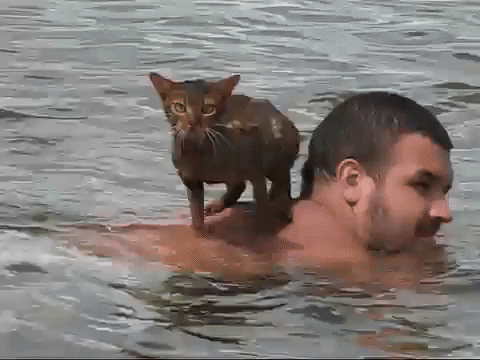
Abyssinian
Abyssinians are one of the oldest domesticated cat breeds, known for their regal appearance and playful antics.
- These affectionate, people-oriented cats are closely bonded to their families and often follow their owners around, curious about everything.
- According to author Gladys Taber, the Abyssinian “is said to have been the fishing cat of the ancient Egyptians 4,000 years ago,” highlighting their ancient connection to water.
Learn more about the Abyssinian cat breed here.
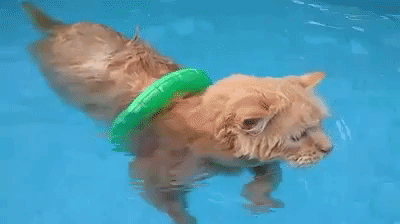
Maine Coon
The Maine Coon has a rich history as a ship’s cat in New England, and it remains a popular breed today.
- Maine Coons have a unique fascination with water. Vetstreet’s Arden Moore notes that Maine Coons are often seen scooping water with their paws to quench their thirst or dunking their toys in water bowls.
- Savvy Maine Coon owners often place the water bowl inside a larger container to prevent spills from their playful water antics.
- In 2019, a 5-year-old Maine Coon named Tissy made national news for her love of swimming, which she does weekly in the family pool. “People say it’s crazy, but she’s just a laid-back cat that loves to swim,” says Tissy’s owner, Sonny Herr.
Learn more about Maine Coons and Tissy’s swimming story here.
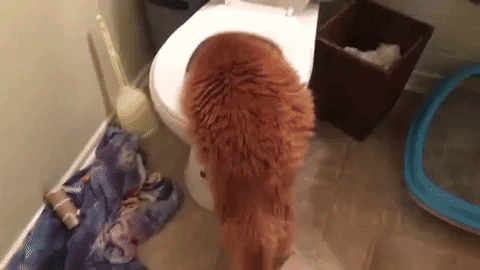
Norwegian Forest Cat
Like their Maine Coon cousins, Norwegian Forest Cats are large, fluffy cats with double-layered, water-repellent coats.
- These cats often enjoy playing in water and are even known to fish for meals in bodies of water. Learn more about the breed on Cattime.
- Nicknamed “Weggies,” their water-resistant coats protect them from cold winters, making them well-suited for outdoor adventures.
Discover more about Norwegian Forest Cats here.

What About Tigers, Jaguars, Lions, and Leopards?
Now you might be wondering about some of the domestic cat’s bigger and wilder cousins: Which ones like swimming?
The most intriguing feline swimmer, however, is the fishing cat.
- Native to South and Southeast Asia, the fishing cat has webbing between its toes and partially protruding toes, which help it catch fish. This cat can even dive underwater to snatch waterfowl by their legs. The fishing cat also has a water-repellent coat, perfect for its aquatic lifestyle. Read more about fishing cats here.
In Spirit of the Wild Cat, Mike and Peggy Briggs explain that in 1996, keepers at the San Diego Zoo trained three baby fishing cats after they were rejected by their mother. These kittens adapted quickly to the water. Explore more in Spirit of the Wild Cat.

Some Cats Swim — But Many Don’t
Nathan the Beach Cat has gained international fame, not just in her native Australia but all over the world.
- Rian Crandon recalls the moment Nathan began swimming: “I wandered into the water, and there, splashing at my legs, was Nathan, who had followed us out there. She just kept following us out further and further, and now she swims.”
- It’s important to note that swimming was Nathan’s choice—she wasn’t forced into the water. Learn more about Nathan the Beach Cat here.
As Laura Moss explains in Adventure Cats, forcing a cat into water can be traumatic, potentially making them fearful of the outdoors or even you. Her advice is simple:
- “If your cat encounters water, either at home or on the trail, let her natural curiosity guide her to the water’s edge. Then, let her decide if she wants to get her paws wet.” Read more from Adventure Cats.
Frequently Asked Questions (FAQ)
How long can cats swim?
Cats can swim for short periods, but their endurance varies depending on the individual cat and their familiarity with water.
What big cats can swim?
Tigers, jaguars, and ocelots are among the big cats that are excellent swimmers.
What cats can swim?
Domestic cats like the Turkish Van, Maine Coon, and Bengal are known for enjoying swimming.
